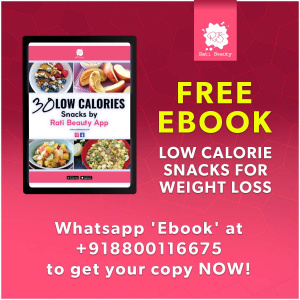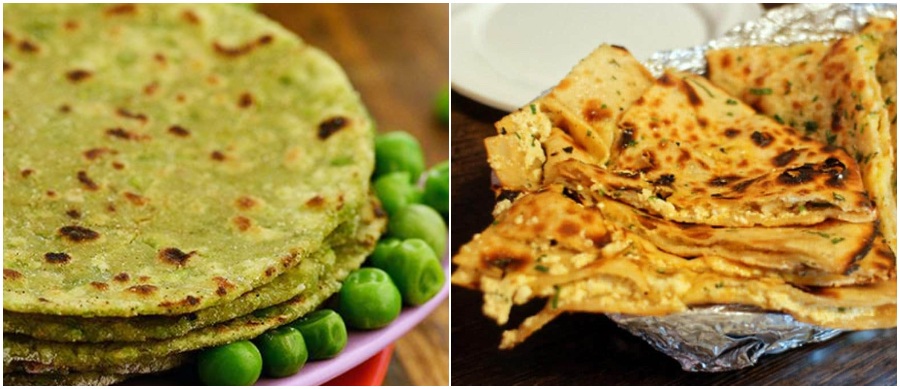“Natural,” “organic,” “low-fat,” “low-calorie,” labels like these on food products create an illusion of healthiness and these terms can be quite misleading in some cases. Since there’s an increasing awareness about eating healthy for overall well-being and to prevent chronic diseases, food companies have recognized the growing demand for healthy food options and are capitalizing on it by introducing a wide range of “healthier” products, but not all of them can be considered “healthy.” For example, advertisements often use visually-appealing images of fresh fruits on jam bottles and label it “natural,” but the first ingredient often is sugar and this one ingredient can challenge their claim. In the same way, a sugary breakfast cereal may boast about being “high in fiber” and “fortified with vitamins,” but they can be high in added sugar and also calorie dense, and cannot be considered a “healthy” breakfast option. That’s why it’s important for consumers to be aware and make informed choices when it comes to picking up healthy food, carefully read the nutrition labels, check the ingredient lists, rather than relying solely on the tags, label, packaging or advertisements. In this article, we list down 5 points to remember when picking healthy foods for weight loss.


1. Pick only One-Ingredient Food or Those With Minimal Ingredients:
Processed and ultra-processed foods contain numerous ingredients due to extensive processing. They often have added sugars, unhealthy fats, high sodium levels, and lack essential nutrients. This hampers weight loss goals. Opt for single-ingredient foods rich in nutrients like fruits, vegetables, lean proteins, whole grains, and legumes. These foods provide essential nutrients, keep you fuller, regulate appetite, and reduce overeating. Processed foods are energy-dense and lead to excessive calorie intake, while single-ingredient foods are lower in calories and offer essential nutrients. Choose single-ingredient or minimally processed foods to create a calorie deficit and achieve weight loss.
2. Avoid Food with Additives and Emulsifiers:
Recent studies have revealed the negative impact of emulsifiers and additives, commonly found in processed foods, on inflammatory bowel disease and the gut microbiome. Emulsifiers like carboxymethylcellulose (cellulose gum) and polysorbate 80 are widely used to enhance texture and prevent separation in processed foods. They are present in fast-food shakes, bottled salad dressings, sauces, and gluten-free products. These emulsifiers, along with polysorbate 80, lecithin, and carrageenan, disrupt the gastrointestinal microbial balance, as demonstrated in a study on mice. Their consumption has been linked to obesity and gut-related issues. As we all know, a robust gut microbiome is crucial to our health and to maintain our weight. So, when you come across low-fat-free and gluten-free products thinking they might help with faster weight loss, think twice!

3. Avoid Added Sugar:
Consuming excessive amounts of added sugars has been linked to an increased risk of obesity. Sugary foods and beverages tend to be highly palatable and can lead to overconsumption, increasing the overall calorie intake. Foods with added sugar can be calorie-dense, meaning they contain a significant amount of calories in a small serving size. This can lead to excessive calorie intake, resulting in weight gain and an elevated likelihood of obesity-related health problems. Foods with added sugars also cause rapid spikes in blood sugar levels, leading to subsequent crashes. These fluctuations can result in increased hunger, cravings, and energy slumps, which can negatively impact overall energy levels and appetite control. Avoiding foods with added sugar can help cut down a lot of calories, keep appetite in check, and makes it easier to create a calorie deficit.

4. Avoid Empty Calories:
Empty calories come from foods that though are filling but provide little to no nutritional value, have high amount of sugar and unhealthy fats. When food with empty calories is consumed, our bodies do not receive nutrients to perform normal functions and to source out nutrients, the body sends out hunger signals all over again, as a result, we consume more calories, leading to calorie surplus. When there is calorie surplus, the body stores the extra energy as fat. If empty calories are part of our daily diet, and we are consuming more calories than we burn, it becomes difficult to lose weight. So, it becomes extremely important to weed out foods with empty calories and replace them with calorie-dense foods instead. Biscuits, cookies, instant noodles, French fries, burger, pizza, sweets, sweetened beverages, candies, ice cream, etc., are some foods that are high on empty calories. Also read: “8 Surprising Sources of Empty Calories you May Be Overlooking.”
5. Avoid Toxic Ingredients Like Transfat:
In a remarkable resolution, the World Health Organization (WHO) wants complete elimination of artificial transfat by the year 2023. Trans fat is produced through a process called hydrogenation, where hydrogen molecules are added to vegetable oils. This process is used to enhance shelf life, solidify the oil, and improve its taste and suitability for frying. However, trans fat poses severe health risks due to its high proportion of LDL (bad cholesterol), which can have detrimental effects on the body. Consumption of trans fat has been linked to the development of serious conditions such as type 2 diabetes, stroke, and heart disease. Trans fats have been shown to negatively impact metabolism by promoting inflammation, insulin resistance, and fat storage. This can impair the body’s ability to efficiently burn calories and increase the likelihood of weight gain. Transfat has also been associated with an increased risk of abdominal obesity, which means it encourages the body to store fat around the belly! Transfat food is commonly found in fried food, vanaspati, fast food, microwave popcorn, packaged baked items, even margarine. So, do not pick any product with “transfat” in its ingredients list.
Overall, the best way to lose weight is by eating a balanced, nutritious diet and being physically active or engage in regular physical activity. This creates a calorie deficit, where you consume fewer calories than your body burns. Since diet plays a major role in weight loss, make informed choices even with foods that come labeled as “healthy.” If you want any help with weight loss, diet plans, etc., subscribe to the Rati Beauty app to get exclusive diet plans that help you shed extra pounds fast.
8 Surprising Sources of Empty Calories you May Be Overlooking
How To Cut Back on Added Sugar to Lose Weight


![8_Major_Reasons_Why_you_Are_Not_Losing_Weight[1]](https://makeupandbeauty.com/wp-content/uploads/2023/12/8_Major_Reasons_Why_you_Are_Not_Losing_Weight1.jpg)


